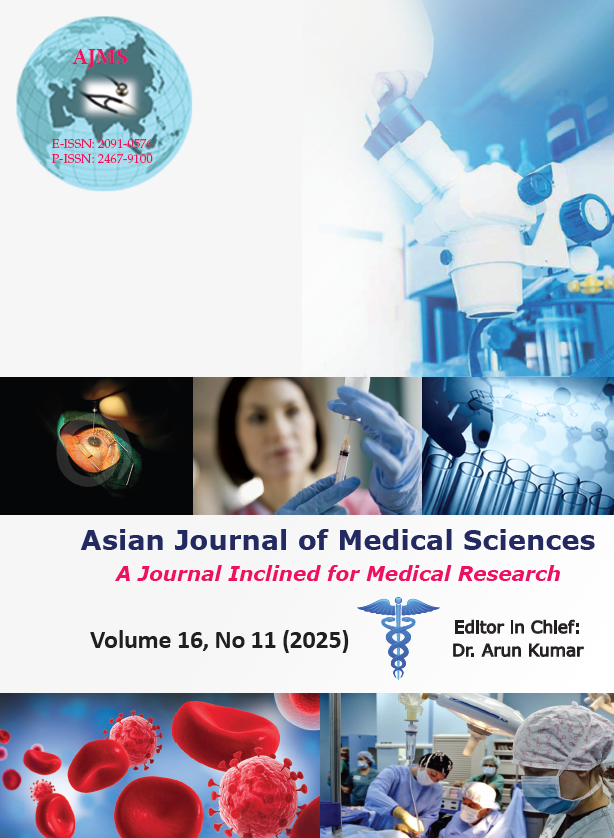Monopolar transurethral resection of the prostate in patients over 80 years of age: A retrospective, single-centre study
DOI:
https://doi.org/10.71152/ajms.v16i11.4837Keywords:
Prostatectomy; Transurethral resection of prostate; Prostatic hyperplasia; Urinary retention; Bladder outlet obstruction; Benign prostatic enlargement; Geriatrics; Retrospective study; Single-center study; ElectrosurgeryAbstract
Background: Bladder outlet obstruction (BOO) secondary to benign prostatic enlargement (BPE) is common in elderly men, with a significant impact on quality of life. Transurethral resection of the prostate (TURP) remains the standard surgical treatment, but its safety in patients over 80 years of age is debated due to comorbidities and higher perioperative risks.
Aims and Objective: To evaluate the safety, efficacy, and functional outcomes of monopolar TURP in men aged ≥80 years.
Materials and Methods: We retrospectively reviewed records of men aged over 80 years who underwent monopolar TURP at our center between January 2022 and January 2025. Data collected included age, prostate size, presentation, comorbidities, medications, perioperative complications, and catheter-free trial outcomes. Surgical success was defined as a satisfactory patient-reported outcome, successful catheter-free trial, and post-void residual (PVR) <100 mL at 1 month.
Results: Twenty-nine patients (mean age 86.8 years) were included. Fourteen (48.3%) presented with lower urinary tract symptoms and 15 (51.7%) with acute urinary retention. The mean prostate size was 70.8 g. All patients achieved catheter-free status post-operatively, with a mean PVR of 41.2 mL. The complication rate was 6.9% (urethral stricture in one patient, meatal stenosis in one patient); all were minor and manageable. No cases of transurethral resection syndrome, blood transfusion, reoperation, or perioperative mortality occurred. One patient was incidentally diagnosed with prostate carcinoma on histopathology.
Conclusion: Monopolar TURP in men over 80 years is a safe and effective procedure with excellent functional outcomes, low morbidity, and no perioperative mortality. Careful patient selection, perioperative optimization, and meticulous surgical technique are key to achieving favorable outcomes in this high-risk group.
Downloads
Downloads
Published
How to Cite
Issue
Section
License
Copyright (c) 2025 Asian Journal of Medical Sciences

This work is licensed under a Creative Commons Attribution-NonCommercial-NoDerivatives 4.0 International License.
Authors who publish with this journal agree to the following terms:
- The journal holds copyright and publishes the work under a Creative Commons CC-BY-NC license that permits use, distribution and reprduction in any medium, provided the original work is properly cited and is not used for commercial purposes. The journal should be recognised as the original publisher of this work.
- Authors are able to enter into separate, additional contractual arrangements for the non-exclusive distribution of the journal's published version of the work (e.g., post it to an institutional repository or publish it in a book), with an acknowledgement of its initial publication in this journal.
- Authors are permitted and encouraged to post their work online (e.g., in institutional repositories or on their website) prior to and during the submission process, as it can lead to productive exchanges, as well as earlier and greater citation of published work (See The Effect of Open Access).





